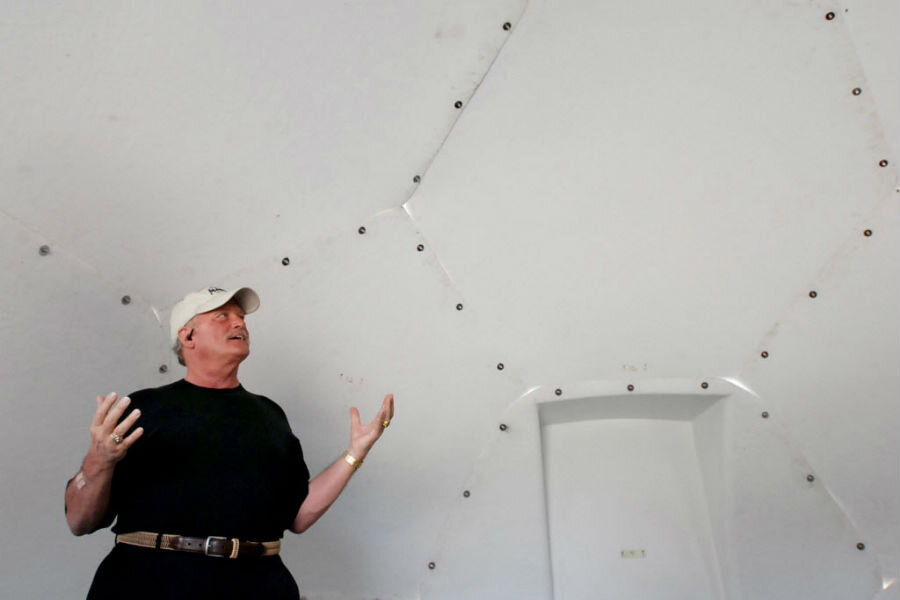Church tackles Hawaii's homeless problem with igloos from Alaska
Loading...
A church in Honolulu, Hawaii, has come up with a solution they say will end homelessness on Oahu: igloos.
But these temporary shelters aren't the kind of igloos that would disappear on hot day on the paradise island. They are dome-shaped shelters made of fiberglass that are easily transported and assembled to create a temporary lodging with enough room for four people to set up their belongings and find some privacy inside.
The effort of the First Assembly of God is the latest example of community members who are becoming actively involved in finding shelter solutions for the homeless in the face of high unemployment rates or the aftermath of a natural disaster. But perhaps no US state has been harder hit than Hawaii: It has the highest per capita rate of homelessness in the United States. The problem is particularly rampant on Oahu and is compounded by the lack of public resources.
Gov. David Ige (D) has highlighted the growing homeless population in Hawaii as a cause for concern, going so far to declare a state of emergency in 2015 to expedite funding for shelters and employment services. The growing homeless population, particularly over the past two years, has led to overcrowded tent cities that spill out across sidewalks and are considered an eye-sore.
"It is a crisis situation," Klayton Ko, the First Assembly of God church's senior pastor, told the Associated Press of the situation on Oahu. So far, the congregation has set up 12 igloos, but Mr. Ko said that he sees the igloos as a temporary solution until Oahu can provide more affordable housing for its residents.
This isn't the first time dome shelters have been introduced in a housing shortage. In the wake of hurricane Katrina that hit New Orleans in 2005, Pacific Domes manufactured in Oregon, provided shelter for thousands of people who had been swept from their homes. But Pacific Dome founder Asha Deliverance warns that temporary shelters are only part of the solution to ending homelessness and many cities have been reluctant to consider temporary shelters on a larger scale.
"Every city wants to get rid of their homeless," said Ms. Deliverance to the AP. A solution must also contend with the resounding stigmatization of the lack of jobs and lacking basic human needs like shelter and food. "They don't want to support homelessness and what that attracts," she noted.
The igloos being used in Hawaii are manufactured by InterShelter of Juneau, Alaska. Each igloo is comprised of 21 panels that overlap like fish scales, president and chief executive officer Don Kubley told the AP. "The panels stack like Pringle potato chips and can fit in the back of a pickup truck," he said.
But Mr. Kubley also acknowledged that the igloos are only part of the solution. "It takes three things to survive: food, water, and shelter, and we are one-third of that formula," he told the Alaska Dispatch News.
And that's where some independent parties, such Honolulu's First Assembly of God congregation, have stepped in when government-sponsored housing and services have fallen short.
The all-weather domes measure 20 feet wide and provide 314 square feet of space and cost $9,500 a piece, plus an additional $800 for shipping. The church is seeking corporate sponsorship to offset some of the costs after raising $100,000 from church members and other houses of worship.
On Hawaii's industrial Sand Island, a homeless community Hale Mauliola, named in honor of the Hawaiian goddess of health and well-being, has also opened made up of single-unit containers for shelters. Bathroom facilities are shared among the residents and a three-meal per day service is provided. A single unit costs $7,717 and for a couple the cost is $9,117, the AP reported.
A more permanent solution is needed, however, and New Orleans might provide a path forward.
New Orleans Mayor Mitch Landrieu set and met the goal of housing returning military members by the end of 2014. So what was the Big Easy's secret? A coordinated effort between the federal, state, and local governments. The city decide to leverage the three governmental stakeholders in addition to nonprofits and private entities. The outcome was a refurbished apartment complex that effectively met the modest number of homeless veterans by the end of 2014.





